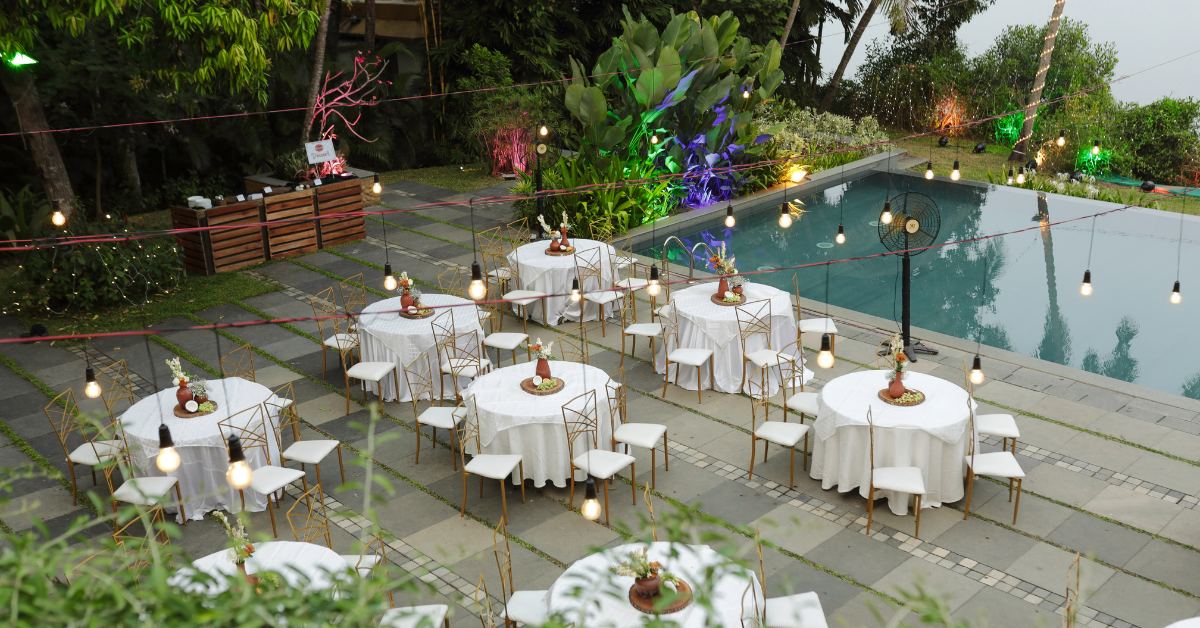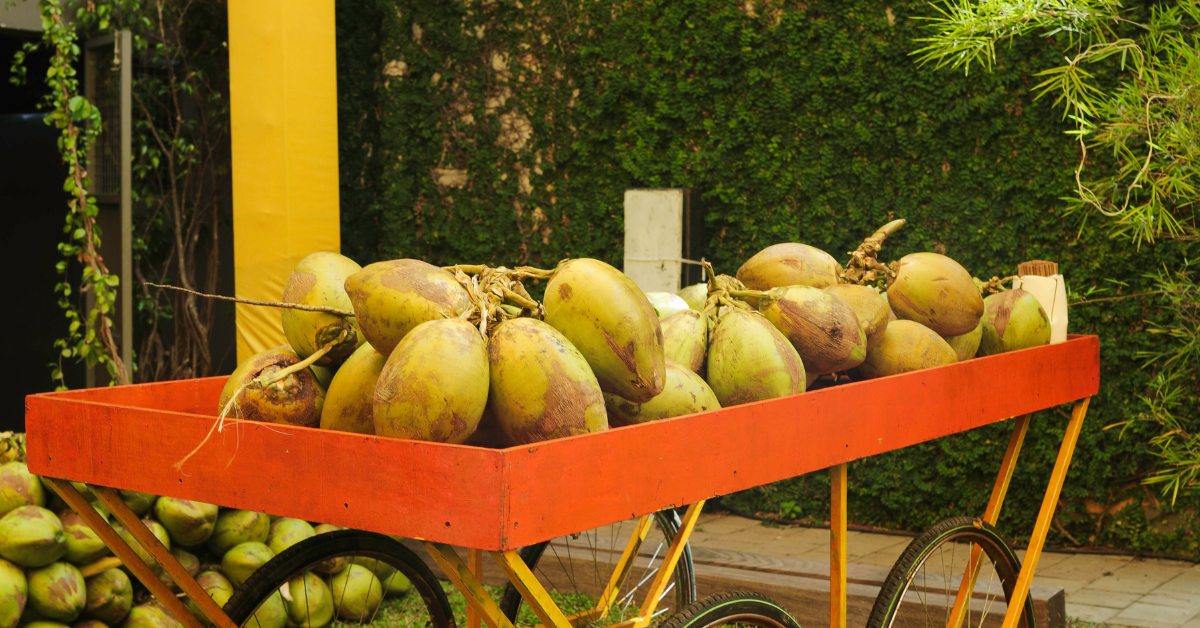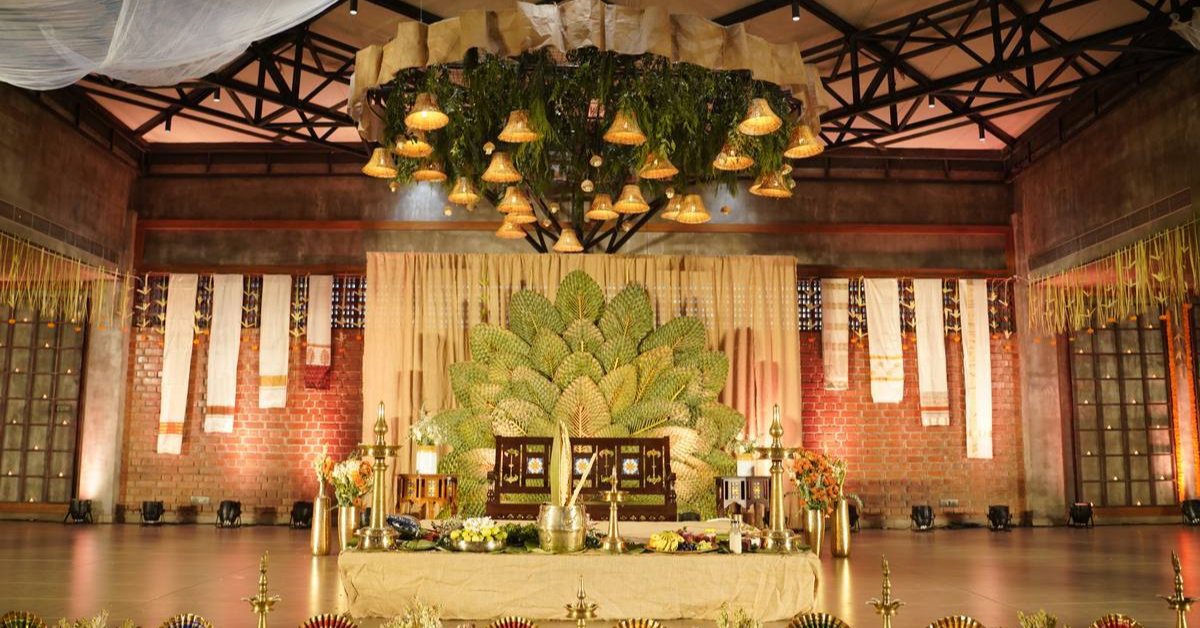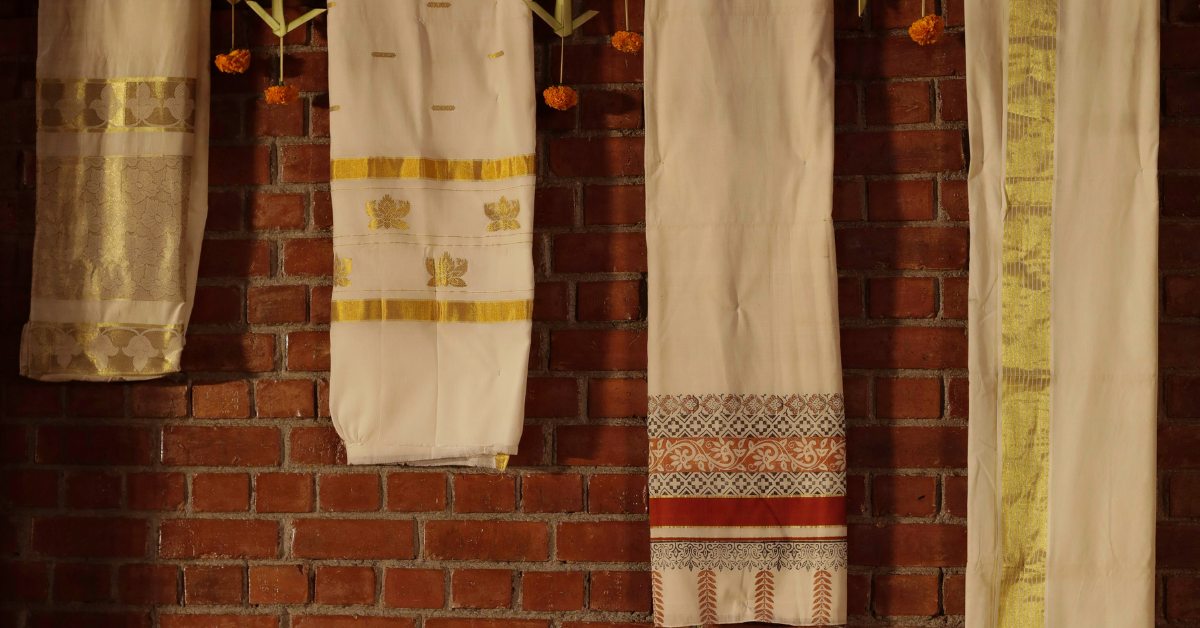Stunning Kerala Wedding With 1200 Guests Produced Just 100 Kg of Waste!
“Sustainability isn’t just an element of our wedding, it’s the essence of who we are as individuals. Every decision we made showed our commitment to the planet, and that made the whole celebration feel even more meaningful,” says Avinash, as he reflects on his and Namita’s low-waste wedding.
Avinash Tewari, a 33-year-old musician by night and digital marketer by day, and Namita Manohar, a 29-year-old service designer living in London, were united by more than just love. They bonded over their interest in sustainability and mindful living. Their paths crossed in January 2020 through a mutual friend, during a time when both were becoming increasingly conscious of their environmental footprint.
From the very first conversation, it was not the small talk that connected them. Instead, they found common ground in their shared ethical values, especially when it came to sustainability. “We connected over discussions about composting, responsible waste management, and a goal of reducing our environmental impact,” Avinash tells The Better India. As their relationship became stronger, their dream of arranging a low-waste wedding also took root.
A love story rooted in sustainability
Their wedding, held in Kozhikode, Kerala, on 1 January 2025, celebrated their love and also showed a glimpse of their values. Namita’s family hails from Kerala, while Avinash’s family is based in Mumbai, and both stated explicitly to their families that the wedding would not be just another glamorous affair. It would reflect their promise to sustainability and responsible living. And so, a wedding that would typically create heaps of waste became an opportunity to set a new standard for low-waste celebrations.
 Avinash and Namita wanted to plan a low-waste wedding and sustainability was at the core of everything
Avinash and Namita wanted to plan a low-waste wedding and sustainability was at the core of everything
When asked about the planning process, Namita recalls, “Sustainability was at the core of everything. We had to make sure that everything we planned resonated with our values. We knew we did not want excess plastic, unnecessary waste, or carbon emissions at our celebration. Every decision was directed towards reducing our footprint.”
From the very beginning, the couple prioritised reducing waste. Invitations were predominantly digital, with a limited number of printed invites sent only to older family members who were not familiar with digital cards. These were crafted on uncoated recycled paper, with seed paper envelopes that guests could later plant to grow flowers.
The bride’s wedding dress was another symbol of her commitment to sustainability. “My wedding sari was a beautiful handloom piece. It was customised with appliqué embroidery made from scrap fabric and tassels made from ‘manjadikuru’ seeds, which were handcrafted by women in Auroville. It supported local artisans, slow fashion, and environmental consciousness,” explains Namita.
The theme of upcycling ran throughout the entire celebration. Avinash’s mehndi and haldi kurtas were made from his mother’s old sarees, while the bride’s mehndi outfit was created from a saree that once belonged to her grandmother. “We didn’t want to buy new clothes for the sake of it,” says Avinash, “It just didn’t feel right. Our outfits were a way of paying tribute to our families and reusing something already cherished.”
When it came to the decor, the couple focused on using what was already available and avoiding anything that would contribute to waste. “We told our decorator, Isha Elat, to only use materials that were eco-friendly and aligned with our principles,” says Namita. “We did not want new plastic props or decorations. Everything had to be locally sourced or reused.”
 For the decor, the couple used locally sourced materials and avoided any kind of plastic
For the decor, the couple used locally sourced materials and avoided any kind of plastic
The wedding decorator, who had never done a low-waste wedding before, worked closely with the couple to make sure every detail met their standards. The backdrop of the wedding stage was a stunning display of sarees from the couple’s families, woven into a beautiful spiral formation. Giant palm leaves were used to create a flower-shaped art, while floral arrangements were crafted using only locally grown flowers and foliage.
Upcycling and using what’s there
Isha Elat, Founder and Creative Director of Pandal Planner, shares, “When the duo approached us, we were both clueless and excited. This was the first time a client had insisted on having a sustainable wedding. We began by learning more about the couple and their lifestyle.”
She continues, “It was a process of both unlearning and learning. We had to rethink everything we knew about wedding planning. Finding the best alternative materials for a low-waste wedding involved a lot of research and brainstorming. Materials that we once thought were inevitable, like flex, sun boards, and floral foam, were replaced with sustainable options, where we reused old flexes that I already had. We began the flower decorations on the morning of the wedding, as guests arrived, because the couple stated that they did not want to use artificial methods to keep the flowers fresh.”
“One of the most rewarding parts of the process was working with local artisans to revive traditional art techniques,” the decorator adds.
“We made a conscious choice to avoid floral foam. This plastic-based sponge is commonly used to keep flowers fresh, but it does not decompose and eventually ends up in landfills, contributing to environmental harm. We wanted the flowers to stay naturally fresh for as long as they could,” explains the groom.
 The couple used wooden chairs and tables that were provided by the venue for the guests
The couple used wooden chairs and tables that were provided by the venue for the guests
The couple chose a plant-based menu, with a focus on Kerala’s local cuisine. This reduced the food’s carbon impact and allowed all the guests to experience delicious and regionally inspired dishes. “Food plays such a big role in any wedding,” says the groom. “By choosing to serve regional dishes, we celebrated the rich flavours of Kerala and offered something authentic to our guests.”
Namita adds, “We worked closely with our caterer to guarantee there was minimal food waste at the end of the event. We asked them to serve smaller portions of rice and encourage guests to ask for more if they wanted it. It was a simple change, but it made a big difference.”
 Avinash and Namita used fresh flowers as part of the decoration for all the wedding events
Avinash and Namita used fresh flowers as part of the decoration for all the wedding events
Her parents also helped the couple in planning the low-waste wedding. The bride’s mother, Priya Manohar (55), shares, “Initially, the thought of planning such an unconventional wedding felt overwhelming, but my daughter’s courage and belief that it was possible put all our fears to rest. We broke down the entire process, looking at each element individually, considering what was really needed.”
“From upcycling unused saris into statement outfits to avoiding plastic in the decor or for consumables like water, every detail was carefully planned. We used cruelty-free products for bridal makeup. We also used palm leaf straws for the coconut water that we served our guests, and steel glasses to serve payasam and buttermilk, during the sadhya. True to our South Indian roots, we embraced banana leaves for serving food,” she adds.
“There were times when vendors were unsure about what we wanted.”
For the wedding festivities, no plastic bottles were used. Instead, the couple set up water coolers at the venue, and the guests use glasses rather than disposable cups. At the entrance of the wedding hall, guests were welcomed with cooling dispensers offering refreshing watermelon juice and lemonade, served in reusable glasses.
 The couple used palm leaf straws for the coconut water that they served to the guests
The couple used palm leaf straws for the coconut water that they served to the guests
In keeping with their commitment to reducing waste, even the wedding favours were thoughtfully curated. Instead of traditional, single-use items, the duo decided to offer eco-friendly gifts. Their zero-waste hampers included locally sourced spices and snacks packed in paper bags, which were then gifted in fabric pouches made by differently-abled artisans.
“This was not just a personal celebration for us; it created meaningful moments for everyone involved, gently touching lives and spreading smiles,” shares the bride’s mother.
The couple’s determination not to compromise on their low-waste vision did bring in a few challenges. “One of the biggest hurdles was getting the hotel to stop serving plastic bottles in the rooms,” Avinash recalls. “Even though we had requested glass bottles, they initially insisted on providing plastic ones. Then, we suggested sourcing the bottles ourselves for the guests. It took some back and forth, but in the end, the hotel agreed, and that was a big win.”
Namita adds, “There were times when vendors were unsure about what we wanted. I think they thought we were being too specific or too demanding. But in the end, we all worked together, and the results were better than we could have imagined.”
How they pulled off a low-waste celebration
The couple’s dedication to reducing waste paid off at the end of the event. The total wet waste generated from the 1200-person wedding was only 100 kilograms, which is an astonishingly low amount, especially considering the scale of the event. “We are so proud of that,” says the groom. “Normally, you will expect far more waste from an event of this size, but with proper planning and the support of everyone involved, we kept it to a minimum.”
 Giant palm leaves were used to create a flower-shaped art in the background of the wedding stage
Giant palm leaves were used to create a flower-shaped art in the background of the wedding stage
They worked with The Bartan Company, a Hyderabad-based consultancy that specialises in low-waste events, to help manage the waste onsite. The team guaranteed that food scraps and banana leaves were composted locally, while other materials were separated for recycling.
When it comes to their wedding’s environmental impact, the couple’s choices speak for themselves. By choosing a plant-based menu, the estimated carbon emissions associated with the food at the wedding amounted to 356kg CO2-eq.
 The backdrop of the wedding stage was a stunning display of sarees from the couple’s families
The backdrop of the wedding stage was a stunning display of sarees from the couple’s families
The use of locally sourced flowers for all the decorations reduced plastic waste to under 2kg. Their decision to buy sustainably produced attire helped avoid 100 kg of CO2 emissions. And by using recycled and plantable paper for invitations, they saved over 14kg of paper waste from being discarded.
“Our wedding was more about living our values in a way that would inspire others to think about their own choices,” says the bride. Avinash agrees by adding, “At the end of the day, our wedding was a reflection of who we are as people. I am glad we were able to make the right decisions and come up with suitable alternatives for all the events.”
Edited by Vidya Gowri; All pictures courtesy Avinash Tewari
News